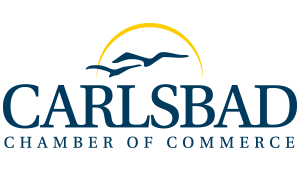The initials CUSD have remained the same, as has the passionate commitment to providing exemplary education to Carlsbad's children, but much has changed since the Carlsbad Union School District became the Carlsbad Unified School District 40 years ago.
At that juncture, what had been a collection of four elementary schools, Buena Vista, Jefferson, Magnolia, Pine, and Valley Junior High, took a huge leap.
It became poised to grow into what it is today: a K-12 district serving nearly 11,000 students via nine elementary sites, three middle sites, one high school (and another, Sage Creek, opening in fall of 2013), and the Carlsbad Seaside and Village Academy programs.
On June 2, 1970, the citizens of Carlsbad Union voted to form Carlsbad Unified. The new district officially began on July 1, 1971. Prior to this time, once students completed Valley, they attended Carlsbad High School, which was then in the Oceanside-Carlsbad Union High School District.
The result of the transformation has been powerful.
Unification gave CUSD control of its direction, prevented creation of a combined Oceanside-Carlsbad megadistrict that would have become unwieldy and potentially contentious, engendered a strong sense of community identity and pride, and ensured we could meet the needs of a growing population and deliver a world-class education to our students.
Long-Term Vision is Catalyst for Unification
Ron Packard, a Carlsbad resident since 1959 who served on both the Union and Unified school boards from 1962-74, then on the Carlsbad Planning Commission and City Council followed by 18 years as a U.S. congressman, recalls how unification came about. Packard said unification was the best way to deal with the rivalry that existed between the cities of Carlsbad and Oceanside, including an attempt by the latter to incorporate the former, leading to the incorporation of the City of Carlsbad in 1952.
"The rivalry was reflected within the Oceanside-Carlsbad Union High School District," Packard said. "Our entire board strongly supported unification. As board president from July 1969-70, I envisioned the school district and community 25 and more years down the road. My colleagues shared this long-term vision. We felt proud that we could do this for our community and our kids, our future."
The board campaigned enthusiastically for unification, conducting intensive research and presenting sound analyses of multifaceted aspects of operations, including staffing, administration, facilities, functions and finances. Although the enrollment in 1970 was only 4,141 and the district's geographical size and population were larger than the City of Carlsbad's, the school board presciently predicted the population would grow.
A report said, "Total enrollment approximately has doubled over the past twelve-year period … it is anticipated that regular enrollment growth will be experienced for many years. By 1985, it is estimated that total district population will at least be twice the present figure."
The report concluded, "Although the school district has a relatively small enrollment at this time, its growth potential is great. Eventually, it will become quite a large school district."
Having demonstrated that a unified school district would eventually serve the State Board of Education's requirement for a student population of at least 10,000, that board set an election date. In keeping with Carlsbad citizens' strong sense of community ownership, voters approved Proposition T six to one, and unification became a reality.
Carlsbad Community Has Always Supported its Schools
Striving to be an exemplary, community-centric school district dates back not merely to 1971, when Carlsbad Unified was born, nor even to 1921, when Carlsbad Union was born, but to the inception of formal education in our town.
In 1872, homesteaders created Hope School near what is now the La Costa Resort and Spa. That location became part of Carlsbad 100 years later when the City annexed La Costa.
Throughout the years, many of Carlsbad's civic leaders, such as W. Allan Kelly and Ede Westree, ardently supported the schools as board members. In addition to Ron Packard, a number of Carlsbad Council members began their political careers on the school board. These include John Mamaux, Julianne Nygaard and current Council member Mark Packard.
Here in school year 2011-12, we celebrate our 40th anniversary of unification, our 90th anniversary of being a multi-site district and nearly 140 years as a community with a deep commitment to giving all students the academic and life skills education needed to prepare them for success in a fast-changing global economy.
This is an exciting time to be in Carlsbad!
Some information for this article was taken from Seekers of the Spring: A History of Carlsbad by Marje Howard-Jones and Windows on the Past: An Illustrated History of Carlsbad by Susan Schnebelen Gutierrez. More information on Carlsbad history can be found at the Carlsbad History Room at the Georgina Cole Library, 1250 Carlsbad Village Drive.
